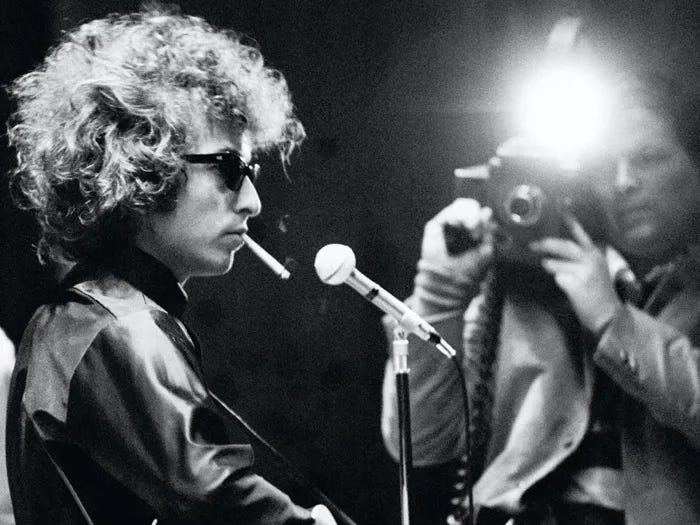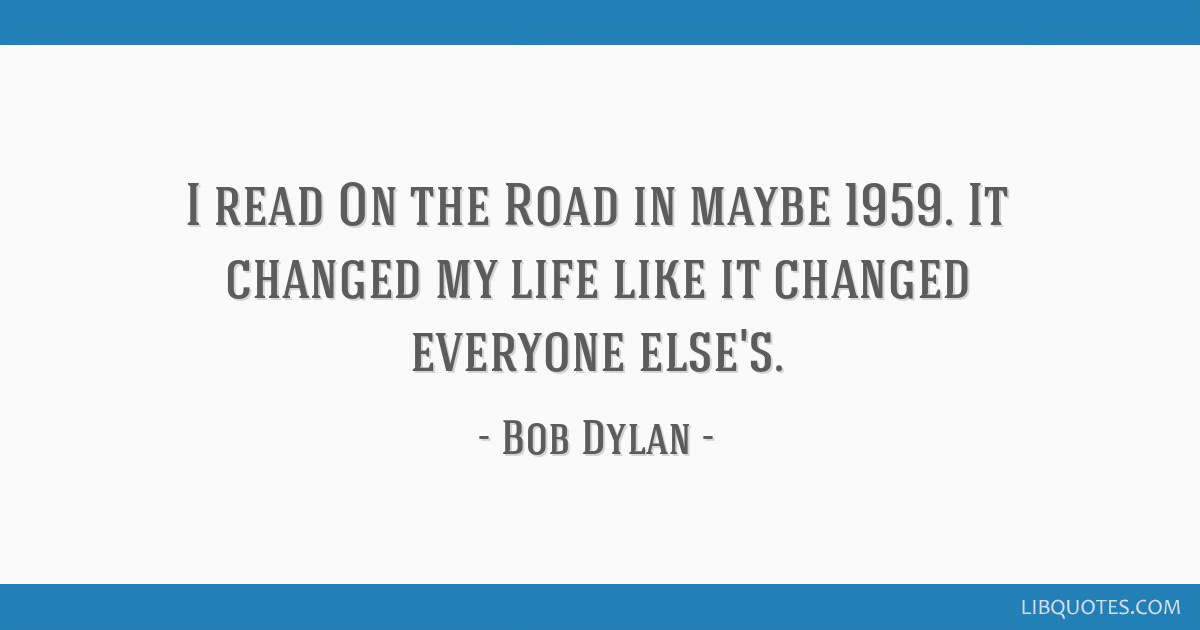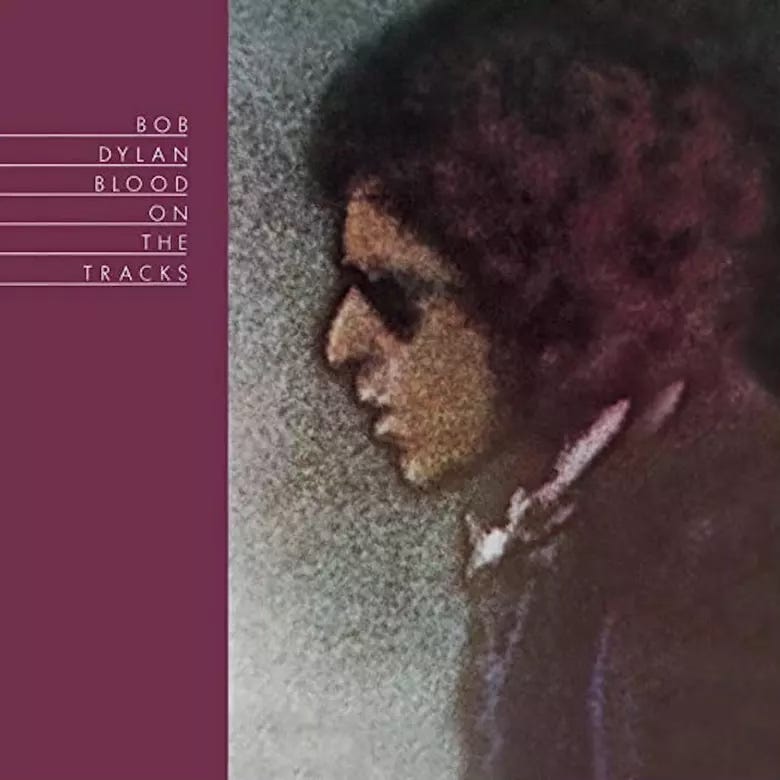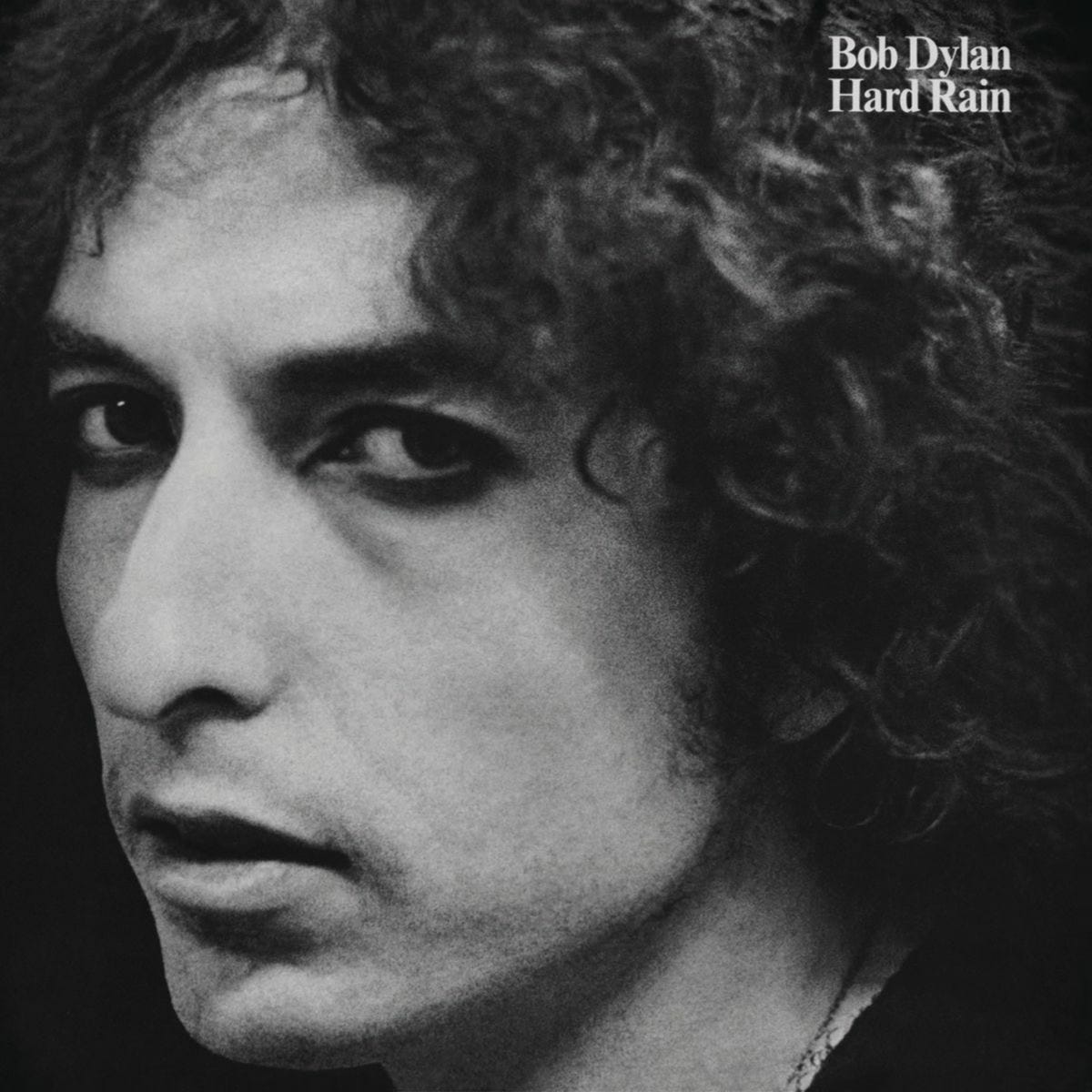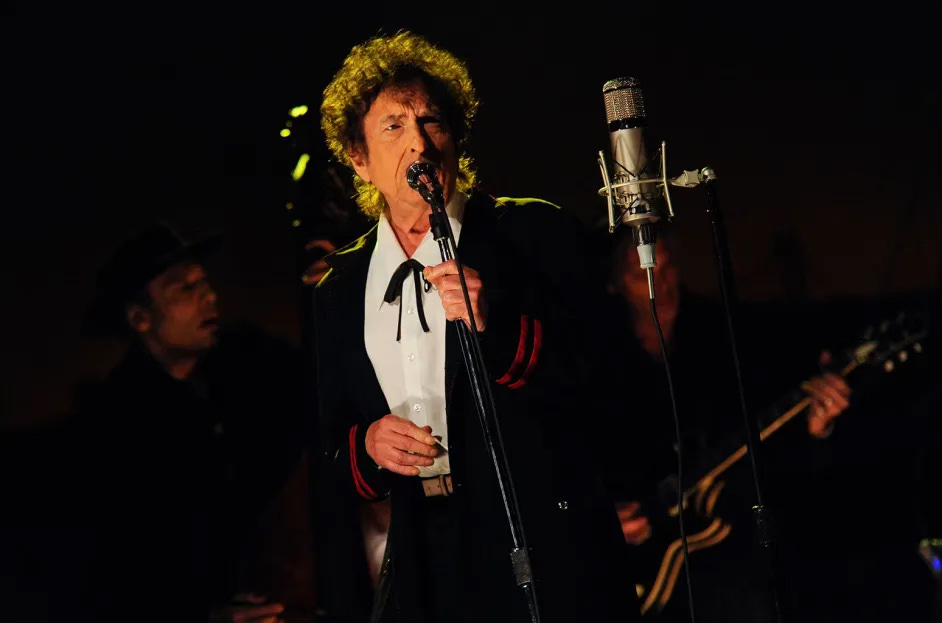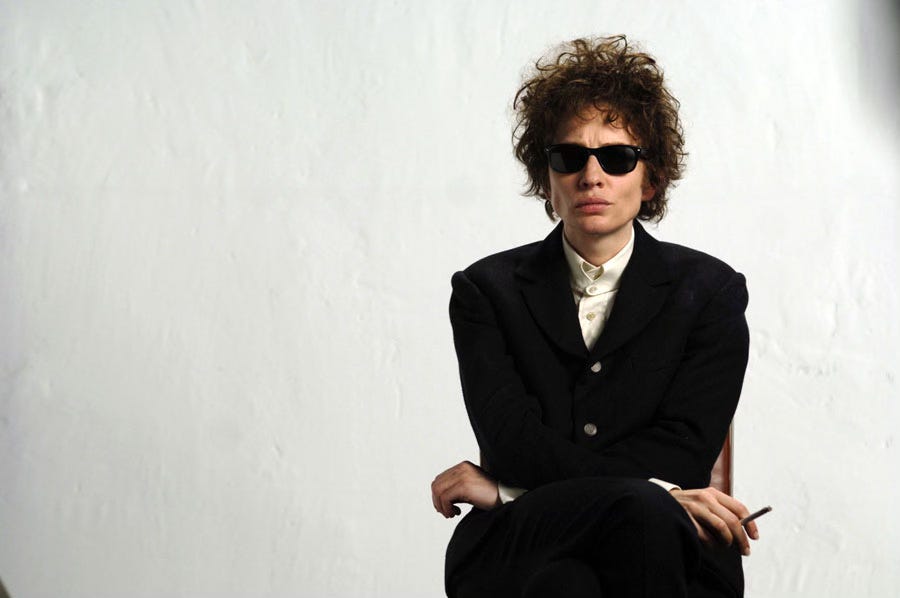Bob Dylan: The Incomplete Unknown
Not sure how I feel about being edged by Bob Dylan for the last twenty-one years, in the guise of Timothée Chalamet or otherwise.
Now, prepare yourselves for a bit of a deep dive here. I’m fully aware the man has a voice like a goose farting in the fog (in the inimitable words Billy Connolly used to describe his own characterful singing voice), but what he lacks in vocal range and texture beyond that of a freshly chewed fistful of gravel, he more than makes up for in incredible wordsmithery, ornate imagery, and profoundly obscure wit and charm. There will be no hot takes here. The bloke has never answered a question straight in his life and somehow refuses to appear the same from one photo to the next. He’s something of an enigma, for sure.
He is a writer, musician, painter, poet, songwriter, Nobel Laureate winner, harmonica designer, and is one of the most covered artists outside of The Beatles & Leonard Cohen (and Hallelujah is doing 90% of the heavy lifting there!) I’ll pop a playlist down below for you to check out some of his back catalogue and an array of people who have spectacularly taken on his songs, from Miley Cyrus to David Bowie, Billy Joel to Cher, Elvis Presley to Jeff Buckley, Tom Jones to My Chemical Romance, Adele to Etta James. Marc Bolan of T. Rex borrowed his surname from Dylan, as Dylan borrowed his own from Dylan Thomas. David Bowie referenced him in Song for Bob Dylan. Patti Smith cites him as a major influence. He wrote the song that became the Ab Fab theme tune. Kurt Cobain, Bruce Springsteen, Leonard Cohen, Kendrick Lamar—all owe something to Dylan’s groundbreaking artistry.
You may call me Terry, you may call me Timmy
You may call me Bobby, you may call me Zimmy
You may call me RJ, you may call me Ray
You may call me anything, no matter what you say
from Gotta Serve Somebody
Bob Dylan. His name alone conjures not a person but a force—a shape-shifting myth, an oracle for the restless, a rebel poet who seemingly plays with time as if screaming through the void of a well-worn harmonica, tickling at the well-tongued reeds, and bending it all to his infinite will. He is not merely an artist; he is a prism, refracting light through folk, rock, gospel, and blues, creating something untouchably his own.
Let me make this clear: Dylan is not a man you can contain. Not in a film, not in a biography, not even in his music. He is a genre-shifter, a mirror held up to the times, a poet laureate who writes not to provide answers but to pose the right questions and then clumsily direct a little light answer-ways with a knackered little pocket mirror. From the aching intimacy of Blood on the Tracks (my favourite album) to the rollicking absurdity of his poetry collection, Tarantula (definitely one of my Desert Island Picks), he’s as elusive as mercury. And yet, his words land like gospel: prophetic, maddening, utterly essential.
To truly understand Dylan is to unpick the threads of modern music, poetry, and counterculture, and realise that his fingerprints are everywhere. His influence is so profound, so omnipresent, that it feels less like he shaped a genre and more like he invented a way of being an artist. And then wrote the book on it (The Philosophy of Modern Song).
Bob Dylan: A Mage for the Masses in Open D Tuning
Start slow. The soft pluck of acoustic strings, a harmonica wailing, and a voice like the wind caught in the rusted spokes of a bicycle abandoned in the rain. Or some other loose semi-tautology of a lyric. Picture a young man—thin as a reed but sturdy as folklore—walking into Greenwich Village with a guitar slung over his back and a head full of poetry that smelled like lightly perfumed smoke and freedom, thinking he’s Woody Guthrie without the threats on his guitar case. That’s where it begins: Dylan, the troubadour, the wandering poet, the voice of a generation that didn’t even know it needed a voice yet. But it, sure as hell, is getting one.
But Dylan is not just an acoustic set. He’s the crackle of electricity, the snap of a wire breaking free, the feedback that howls before the first chord even lands. Picture Newport, 1965: the man steps out with a Fender Stratocaster, and the world holds its breath. “Play it loud,” he says. And then he does. The air splits open. Folk dies a little more. Rock is born, again. A few boo, but they don’t matter—not to Dylan. He’s already somewhere else, halfway down Highway 61, chasing something wilder, freer, untouchable. It has long been argued that the folk music scene didn’t break with Dylan because he went electric, but more simply because he stopped playing civil rights songs. We can’t all be Joan Baez, sorry. Bob was needed elsewhere.
Dylan’s words are not just words—they are powerful well-crafted incantations. He’s the bard of a fractured America, the storyteller who doesn’t need to explain himself because the truth is already there, hidden in the spaces between his lines. In Visions of Johanna, he doesn’t just sing; he paints, he weaves, he conjures: “The ghost of electricity howls in the bones of her face.” That’s not just a lyric; it’s a portal. Step through it, and you’ll never come back the same way twice.
Mona tried to tell me
To stay away from the train line
She said that all the railroad men
Just drink up your blood like wine
An’ I said, “Oh, I didn’t know that
But then again, there’s only one I’ve met
An’ he just smoked my eyelids
An’ punched my cigarette
from Stuck Inside of Mobile with the Memphis Blues Again
And now, Timothée Chalamet takes up the reins, Hollywood yet again daring to take on this living myth. Sure, Chalamet’s got the cheekbones, but does he have the necessary grit? Dylan’s no delicately coiffed supertwink dreamboat; he’s the scruffy rebel who set the world on fire and didn’t stick around to watch it burn. Six actors tried and couldn’t quite capture him in I’m Not There. What makes us think anyone can now? Still, we’ll watch—how could we not? Dylan’s story is the story of music, of art, of rebellion, of a world that keeps turning, and turning, and turning. And I’m always here to see someone else have a crack at it. So why not lil Timmy?
To even begin to understand how to crack the surface of Dylan is to understand the art of transformation. He’s the folk singer who went electric, the rebel who found solace in gospel, the enigma who turned silence into the loudest statement. He is credited (whether an urban myth or delightful tidbit) with having been the one who first introduced The Beatles to drugs, forever altering the trajectory of modern music. He wandered into the graveyard with Allen Ginsberg to lay a bouquet at Jack Kerouac’s resting place, forging a connection between the Beats and the rock poets they inspired. He stood alongside Joan Baez, their voices twining like ivy in songs that became anthems for justice.
But Dylan’s legacy isn’t just in his collaborations or his controversies—it’s in the sheer breadth of his creativity. He’s not just a musician; he’s a poet, a painter, a philosopher. Even his tailor made harmonicas have wooden reeds that cry out like wounded birds. Even his so-called failures are triumphs. Take his Christmas album, Christmas in the Heart—an absurd, growling crash & tumble through numerous yuletide classics that somehow feels both ridiculous and endearing. Dylan doesn’t do anything halfway. He commits. He transforms. He endures. His chaotic festive anthem Must Be Santa is a wild romp through the entire season and the music video depicts the only party I’ve ever seen that for me comes even close to rivalling the one in Freddie Mercury’s Living On My Own music video.
Situations have ended sad
Relationships have all been bad
Mine have been like Verlaine's and Rimbaud's
But there's no way I can compare
All them scenes to this affair
You're gonna make me lonesome when you go
from You’re Gonna Make Me Lonesome When You Go
Dylan’s Nobel Prize win in 2016 wasn’t just an honour; it was a cultural shift. He forced the world to reconsider what literature could be, proving that a song could carry as much weight as a novel, a symphony, or a sonnet. And he did it without pandering, without pretence, without even bothering to show up to the ceremony. Classic Dylan. He had a prior engagement, apparently, though what could trump a Nobel Prize party, I have no idea. Maybe it was yet another leg of his infamously & accurately named The Never Ending Tour. His entire acceptance speech is definitely worth a read though.
Also, a quick word on his autobiography (as recommended later in the Further Reading section) Chronicles: Volume One. Aside from the fact it’s essential reading and brilliantly written. If you want Volume 2, it’s available to pre-order from Waterstones, but doesn’t come out until December 30th 2030. Not entirely sure why. It’s always been my understanding that he wrote three volumes in one go, and is releasing them one at a time. However, the first volume dropped in 2004, and I’ve been desperately waiting ever since. Not sure how I feel about being edged by Bob Dylan for the last twenty-one years, in the guise of Timothée Chalamet or otherwise.
For me, it began with Don’t Think Twice, It’s All Right. The kind of song that makes you believe it was written specifically for you, in the way Dylan’s best work always does. It’s a heartbreak wrapped in nonchalance, a kiss-off that is both cutting and tender. "I ain’t saying you treated me unkind / You could’ve done better, but I don’t mind." It’s the poetic equivalent of shrugging while bleeding out—a masterclass in understatement. (“It’s alright ma, i’m only bleeding”, you know, that kind of thing!) Actually, I think I first read his name on the back cover of Jack Kerouac’s On The Road, to date still the greatest review of a book ever written.
Maybe I actually heard Lay, Lady, Lay on a 60s compilation CD in the car on long drives to the Yorkshire coast. Possibly I’d heard a friend play Jimi Hendrix’s All Along The Watchtower on a cassette before then. Or did I hear his name somewhere before that? There used to be a bookshop in the city centre called The Inkwell. They often played Dylan in the background. It made the antique school desks reverberate slightly. (It’s exactly as pretentious as it sounds, and I fucking loved it.)
And then sometime later came Blood on the Tracks, the album that wrecked me, rebuilt me, and has never stopped revealing its layers. Tangled Up in Blue, with its kaleidoscopic narrative, feels less like a song and more like slipping through the cracks of someone’s memory. Dylan’s words don’t just describe—they inhabit. "We always did feel the same, we just saw it from a different point of view." How does he manage to capture an entire relationship in a single line? How? I might never know the answer, but it will never stop me from searching. And there are more than enough albums to keep me quietly occupied for a good long while yet.
Dylan’s harmonicas are another kind of poetry, raw and piercing, the sound of the wind trying to escape its own grief. I feel like I’ve mentioned his harmonicas far too many times already, but until you’ve played one, shush! I own a set of his harmonicas—wooden reeds that bend and wail with a mournful, almost human quality. They are a dream to play. Steven Tyler, eat your heart out. Diatonic, not chromatic though, I’m not a fucking wizard, unlike that Stevie Wonder. I once played Dylan’s custom Gibson guitar in a Parisian music shop, and though my performance was more Subterranean Homesick Blues than Like a Rolling Stone, it was a surreal momentary communion with the man himself. The guitar played dreadfully but it was sublime. Perfect.
Dylan is a poet, first and always. While he won the Nobel Prize in Literature not for a single work but for his ability to transform language itself, to bend it to his will and make it sing, his poetry collection Tarantula is a nothing short of a chaotic fever dream, but it’s Dylan through and through—sprawling, uncontainable, a symphony of words that refuses to behave. You could do with being pretty well-versed in Beat poetry to begin to penetrate some of it though, I would imagine.
His words are truly where the magic lies. Dylan doesn’t just write songs—he constructs worlds. His verses are populated with drifters, lovers, prophets, and clowns, all weaving through the fractured landscapes of America.
Here’s a slice of Tarantula:
“along black winds & white Fridays, they wash out water & shriek of jungle & lenny immune to the mathematics, he, the greasy quack, - the vagabond god . . . he plants flowers in their saddle bags & speaks of Jesus brave & graduating - tragedy, the broken pride, shallow & no deeper than comedy - bites his path, his noise, his shadow . . . resign from mind the heart of light & approve the doom, the bending & the farce of happy ending . . . those that would gas the memory & shut out the might of right, the sight of those defending & offending the blossom girls of the dark, pregnant, permanent & pale outlaw . . .”
excerpt from Guitars Kissing & the Contemporary Fix
It’s raw, unpolished, and yet it burns with truth. Dylan doesn’t write to comfort you; he writes to wake you up.
It’s probably an acquired taste, but I like it. But then again, lyrics like “you just sit around and ask for ashtrays, can't you reach?” really speak to me! So, there’s really no accounting for taste.
When I saw Dylan perform live at the London Palladium in 2023, it was less a concert and more a revelation. I never thought I’d get to see him live, which is principally the reason for me getting his symbol, the eye of the artist, tattooed on my forearm at the age of 18. And yet, there he was, a man in his 80s, still defying expectations, still refusing to become his own monument. His set list was unpredictable, his unkempt delivery crackling with ethereal energy, and every note felt vital to my soul. Dylan doesn’t ever just rest on his laurels—he turns them into kindling and sets them alight. The stage was oddly underlit like a neon dancefloor, and all that obscured the glare was the faint outline of the man leaning nonchalantly against an upright piano. Then the familiar warble drowned all the voices from my head, and put to rout all that was not life.
Let’s talk about A Complete Unknown. Timothée Chalamet is stepping into some very well-worn boots, and while I’m intrigued to see his take, I remain loyal to Cate Blanchett’s gender-bending portrayal in I’m Not There. Cate didn’t just play Dylan; she became the contradiction, the full pocket-sized young swaggering defiance. Chalamet will bring his own flavour, I have no doubt, but Dylan is a man of many faces, and no single actor can surely be expected to capture them all. And I don’t expect it now.
Maybe, just maybe, Chalamet has the audacity, if not the gravel-toned gravitas, to step into those scuffed boots and make us believe he’s really a rolling stone, or, at the very least, like one. Or maybe he’s just Hollywood’s latest attempt to press pause on the biopic jukebox and hope we don’t notice. Either way, I’ll be watching. Mildly begrudgingly, at first. Probably twice. It’s alright.
Suggested Listening
If you’re new to Dylan, I’ll always recommend that you start with Blood on the Tracks. It’s an album that will break your heart and then teach you how to rebuild it. From the raw vulnerability of Simple Twist of Fate to the haunting beauty of Shelter from the Storm, it’s a masterclass in storytelling and emotion.
For the Dylan completists, revisit The Bootleg Series or The Witmark Demos. These outtakes and alternate versions show a different side of the man—a glimpse behind the curtain of his genius.
Here is my introductory playlist that will hopefully delight Dylan purists and simultaneously introduce a whole new generation to the brilliance of his enormous back catalogue. There are a few crucial listens from the man himself, some demos, live versions, alternate takes, and working progress tracks. And then there is an array of infamous and little-known covers of his songs, and a few tracks inspired by Dylan himself to round it all off. I know his voice can be an acquired taste at times, but his lyrics are the real force majeure here. And as a treat, a couple of tracks from the son now following in his musical footsteps, Jakob Dylan.
Recommended Reading: Dive Deeper Into Dylan
If this loving ode to all things Bob Dylan has left you yearning for more, here’s a curated list of must-read/watch curios to enrich your understanding and appreciation of the man, the myth, the bard:
1. Tarantula by Bob Dylan
This chaotic and surreal collection of prose-poetry is Dylan at his most experimental. It’s messy, provocative, and utterly unique—perfect for fans who want to see the unfiltered inner workings of his mind. Not for the faint of heart, but certainly for the avid Dylan fan and adventurous reader.
2. Chronicles: Volume One by Bob Dylan
Dylan’s Chronicles is an intimate, fragmented memoir that offers glimpses into his creative process, his influences, and his journey as an artist. It’s not a straightforward autobiography but a richly textured mosaic of anecdotes, reflections, and insights. (We’re still waiting for Volume Two, Bob. Any day now.)
3. 'Do You, Mr Jones?: Bob Dylan with the Poets and Professors' by Simon Armitage
Simon Armitage’s essay on Dylan explores his genius with the precision of a fellow poet. Armitage dives into Dylan’s lyricism, wit, and rhythm, highlighting why his songs transcend music and enter the realm of high literature.
4. Bob Dylan’s Nobel Lecture
Dylan’s Nobel Prize lecture is a poetic exploration of the works that shaped him and his thoughts on literature and songwriting. Short but profound, it’s a must-read for anyone curious about how Dylan views his craft. Available to read or listen to online.
5. Bob Dylan: Behind the Shades Revisited by Clinton Heylin
Often regarded as one of the most comprehensive Dylan biographies, Heylin’s work dives deep into Dylan’s career and personal life. A thorough and fascinating account of his journey.
6. The Lyrics: 1961-2012
This collection compiles all of Dylan’s lyrics over five decades. It’s a testament to his evolution as a songwriter and poet, providing readers with a lyrical roadmap of his extraordinary career.
7. Dylan on Dylan: Interviews and Encounters edited by Jeff Burger
A treasure trove of interviews and conversations with Dylan, spanning his career. It’s a fascinating look at how Dylan presents himself (and reinvents himself) in his own words.
8. Bob Dylan: The Essential Interviews edited by Jonathan Cott
This collection brings together some of Dylan’s most famous interviews, showcasing his wit, candour, and mystique. A brilliant companion to his music and writings.
9. Bob Dylan in America by Sean Wilentz
This book contextualises Dylan’s work within American history and culture, offering a scholarly yet accessible take on his impact.
10. No Direction Home: The Life and Music of Bob Dylan by Robert Shelton
Written by one of Dylan’s earliest supporters in the press, Shelton’s biography offers an insider’s perspective on his rise to fame and artistic evolution.
11. No Direction Home (Documentary by Martin Scorsese)
Martin Scorsese’s deep dive into Dylan’s early years and rise to fame.
12. I’m Not There (Film by Todd Haynes)
A kaleidoscopic portrayal of Dylan’s many facets, featuring Cate Blanchett’s unforgettable turn as a Dylan who transcends gender.
13. The Drawn Blank Series by Bob Dylan
A collection of his paintings & drawings, that are as characterful & charming as his voice & lyrics.
“I accept chaos. I am not sure whether it accepts me.”
Bob Dylan
Now all the criminals in their coats and their ties, are free to drink martinis and watch the sun rise.
What’s your Dylan moment? What song, lyric, or line has stayed with you? What songs do you revisit time and time again? What urban myth about him do you like to believe most?
If this piece resonated with you, consider subscribing, sharing, or tipping the price of a coffee below.



